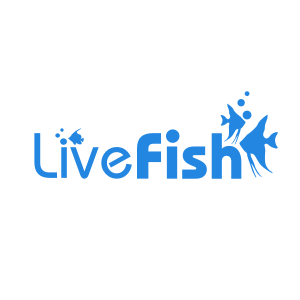Yellow Fin Flasher Wrasse - Large
The Yellowfin Flasher Wrasse is one of the most striking fish in the marine trade. Easy to take care of and capable of beautiful flashing displays, makes them a great choice for your tank.
The Yellowfin Flasher Wrasse is a bright and attractive species. Juveniles and females are less colourful than the males' eye-catching appearance. Especially when they display rapid neon blue flashes during courtship. Colours do vary according to mood, age, and region but generally, males are a vivid orange/yellow. They have a blue line running along the bottom of the dorsal fin. There are often fainter blue lines running along its body towards the tailfin. Three blue bands extend from around the eye and on the top of the dorsal fin, there are one to four red filaments. These can change colour to yellow or white when the males display during courtship. Females have a reddish colour body and violet stripes. They don't have the filaments on the dorsal fin.
They are pelagic spawners, but due to the size of water, they need to breed successfully, home breeding isn't possible. Males are more colourful and usually larger than females. They can be introduced to a female more easily than other species of wrasse as they are less aggressive. Initially, males may chase and nip females, but it should only occur for 1 or 2 days. Yellowfin Fairy Wrasses are hermaphroditic, females change sex when a male is needed.
Yellowfin Flasher Wrasse originates from Indonesia. They are distributed around the Eastern Indian Ocean, and Northwest Australia. Their natural environment is on reefs, around weeds and rubble areas. Usually at depths of between 6-30 meters.
Tank Recommendations for your Yellowfin Flasher Wrasse
A Yellowfin Flasher Wrasse needs at least 55 gallons (208 liters) capacity in a tank. If keeping multiple males together then the tank size should be increased to at least 135 gallons (511 liters).
Flasher Wrasses are ideal for a reef environment but can also stay in a fish only tank. They aren't a threat to invertebrates or corals and are often interacting in open water. A suitable tank should be long, with several wide, open spaces. This will allow them to dart around the tank during flashing displays.
They need plenty of rockwork in a tank, for hiding and building a sleeping area. A secure lid is advisable as this species can cause other fish to jump with its quick movements.
Suitable Tank Buddies
Yellow Fin Flasher Wrasse have a peaceful temperament. They can co-habit with other peaceful fish and inverts. Male conspecifics will fight if a tank isn't large enough and there aren't enough females.
Usually Compatible
Peaceful tankmates such as Gobies and Assessors are the most suitable tank buddies. Also, conspecifics, if the social group consists of a male and a harem of females.
Sometime Compatible
Aggression may be shown to other Wrasses of a similar shape or size. Male conspecifics will fight unless there is enough space in a tank for cohabiting.
Rarely Compatible
Avoid large predators and smaller aggressive fish such as Dottybacks and some Damselfish. While not a threat to inverts they can threaten baby shrimp. Make sure any shrimp in a tank reach the juvenile stage before introducing your Wrasse. Slow feeders such as Seahorses and Pipefish will be outcompeted for food.
Feeding your Yellowfin Flasher Wrasse
Yellowfin Flasher Wrasses are carnivorous. A suitable diet should contain vitamin enriched brine and mysis shrimp. They will also consume high-quality food flakes and pellets. They need to be fed 2-3 times a day as they don't supplement their diet from food in the rockwork.
| Scientific Name | Paracheilinus flavianalis |
|---|---|
| Care Level | Easy |
| Common Names | Yellowfin Flasher Wrasse, Yellow Fin Flasher Wrasse. |
| Diet | Carnivore |
| Fish Family | Labridae |
| Lifespan (years) | 7 |
| Max. Length (cm) | 9 |
| Min. Tank Volume (l) | 208 |
| Origin | Indonesia, Eastern Indian Ocean, Northwest Australia |
| Reef Safe | Yes |
| Sociability | Peaceful |
| Venomous | No |
| Water Conditions | 22.2-25.5° C (72-78° F), dKH 8-12, pH 8.1-8.4, sg 1.020-1.025 |

